30 - Surgeonfishes Part 2
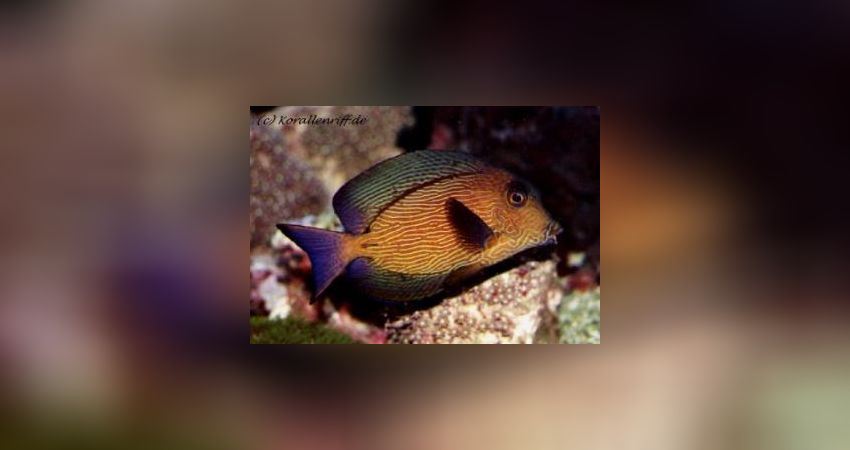
Interesting facts about the genera Ctenochatus and Naso
Part 2: Ctenochatus and Naso
.
Genus Ctenochaetus:
The genus Ctenochaetus [bristle-toothed surgeonfishes] also harbours some interesting surgeonfishes that keep well in the aquarium. It is currently thought that there are about 10 different species. We would like to introduce those that regularly come into the trade. Unlike species of the genus Zebrasoma, for example, they do not eat leaf algae but "suck" diatoms and other single algae from the decoration and aquarium glass. Bristlefish, as they are called, also eat diatoms, which most other surgeonfish do not do! What they all have in common is the often bright colouring when they are young, which turns brown with age and growth. All surgeonfishes of this genus accept any food after a short time, such as frozen food, flake food, lettuce or algae supplementary food. The whole genus Ctenochaetus is much more robust than the genus Acanthurus and therefore much more suitable for the beginner for aquarium life. But they also need enough swimming space, so that an adult Ctenochaetus hawaiiensis clearly needs more than 1000 litres of water volume.
Ctenochaetus strigosus: Similar to the yellow sailfin surgeonfish, it is the best-selling of its genus. The low price, the good availability in the trade and its small final size make it a frequently sold aquarium fish. At approx. 12 cm it does not quite reach its natural final size of approx. 18 cm. Is an excellent algae eater, but tends to see other algae eating fish as competition. Especially with the algae eater Salarias fasciatus it does not get along well. There is some evidence that these two do not get along well, and the doctrofish chases the small blenny around the aquarium, which is why you should do without one of the two for the sake of the Salarias.
Small, 300 - 400 litres are quite sufficient for it, but with increasing size it should also be offered a swimming space of at least 500 - 1000 litres. In a revision of the genus Ctenochaetus, Randall & Clements (2001) found that Ctenochaetus strigosus only occurs in the North Pacific, around Hawaii. The form previously attributed to this species in the Indian Ocean (from East Africa to Malaysia, around the Maldives, Cocos and Christmas Islands) has therefore been given a new name: Ctenochaetus truncatus.
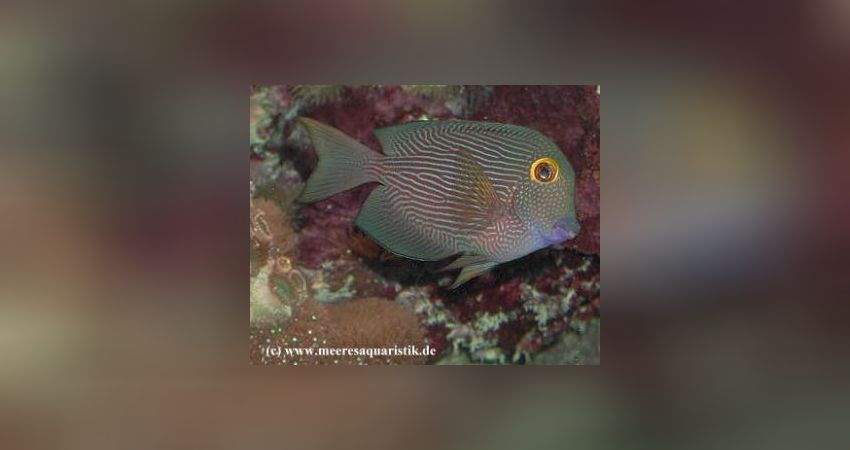
Ctenochaetus striatus can also be found in the trade, and is similar in behaviour to C. strigosus. At about 15 cm it grows larger than Ct. strigosus (natural size up to 22 cm) and quickly accepts all kinds of substitute food. It is found in the Red Sea, Indo-Pacific, East Africa and from Japan to the Great Barrier Reef. It also quickly acquires its brown colouring, but this does not make it any less interesting. It is a peaceful doctor like the whole genus Ctenochaetus. You should offer him a little more swimming space, up to about 1000 litres when he is fully grown. Keeping them in pairs does not seem to work very well with most Ctenochaetus species or is often only possible in the juvenile stage.
Ctenochaetus hawaiiensis juvenile: This is probably the best known representative of its species, which is very beautifully coloured in the juvenile stage. It is found from Hawaii to Palau and south to Samoa and the Marquesas. However, it quickly loses its bright orange colour and turns brown, as can be seen below. However, it does not lose its proud and impressive swimming style. A doctor that needs a lot of swimming space, we think much more than the two bristle tooth doctors mentioned so far. We are not aware of a pair-bond for a longer period of time, but it seems to be possible in the juvenile stage.

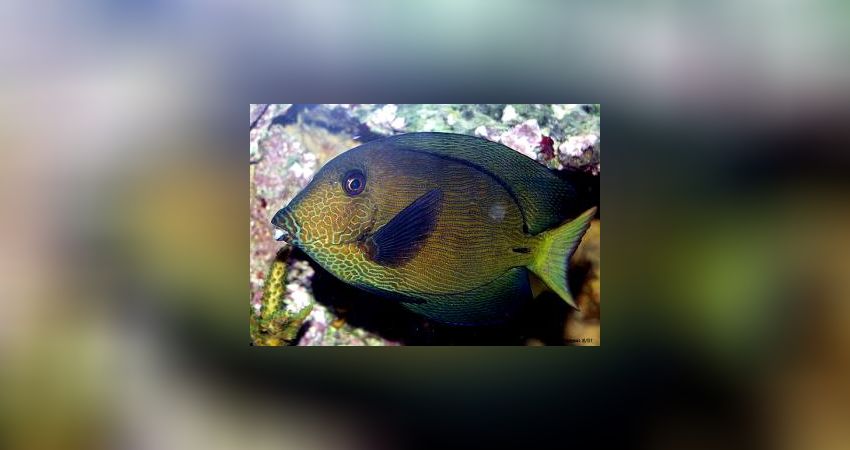
Ctenochaetus hawaiiensis adult: Our chevron doctor was given away after two years at the size of 15 cm because we felt that he was no longer comfortable in our 1000 litre aquarium. He started with a size of 15 cm. and showed some bad habits. This included eating the zooxanthellae of a Trachyphyllia geoffroyi the size of a football, probably due to insufficient algae growth in the aquarium. Today it swims in an 8000 litre aquarium where it has grown in size again. Therefore we ask you to buy this fish only if you can offer more than 1000 litres of water. A proud fish that is one of the most interesting fish despite its brown colouring.
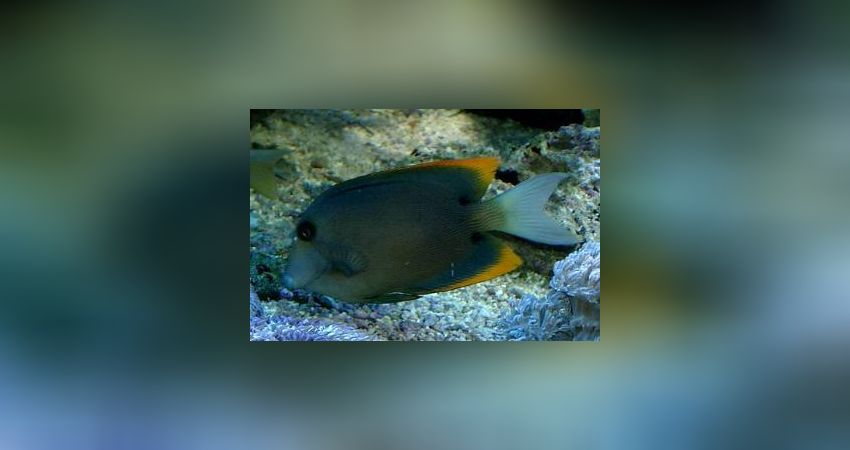
Ctenochaetus tominiensis: The Ct. tominiensis, which only grows up to 16 cm in the wild, still lives in the shadows in our aquariums. Yet it is one of the fish from the genus Ctenochaetus par excellence for the community aquarium. It is constantly on the move and swims a lot, much more than the other species. Unfortunately it is only sold in isolated cases, which should explain the low distribution in home aquariums. Peaceful towards all aquarium seeds, easy to keep in the aquarium and afterwards very durable. Unfortunately we do not know anything about keeping them in pairs. Occurs in the Western Pacific, Palau and the Philippines, Indonesia, Solomon Islands and the Northern Great Barrier Reef.
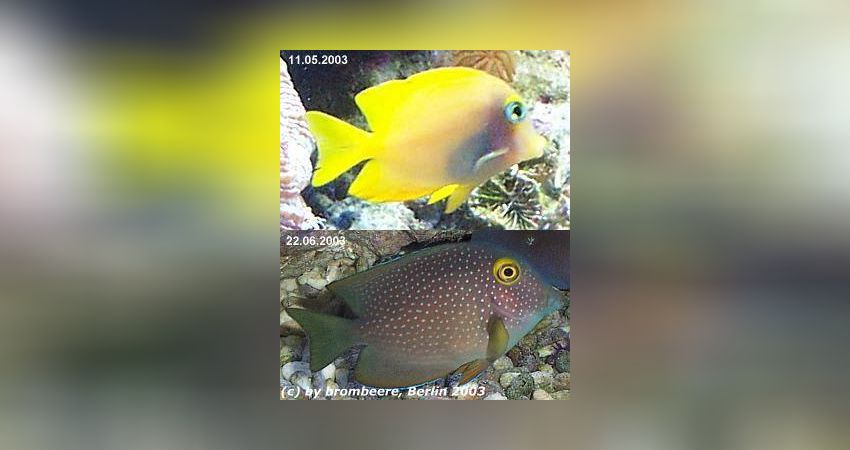
Ctenochaetus truncatus: This very interesting surgeonfish occurs in the Indian Ocean. Seems to keep well, ähnlich like the other species from the family Ctenochaetus. At just under 15 cm it does not grow very large. Like others it changes from yellow to brown. The colour change starts at about 4 - 5 cm. Like all Ctenochaetus species they like to "suck" algae growing on the glass. In a revision Randall & Clements (2001) found that C. strigosus only occurs in the North Pacific, around Hawaii. The species, which until then had been classified as C. strigosus, has been given a new name, C. truncatus. The difference is essentially that the whole body, like the head, is spotted whitish-blue, whereas in C. strigosus it is longitudinally striped. Both have the yellow eye ring in common. Juveniles are mostly yellow in the whole. Peaceful surgeonfish that is highly recommended for the aquarium with invertebrates.
Literature: Literature Randall J.E. & K.D. Clements, 2001: Second revision of the surgeonfish genus Ctenochaetus with description of 2 new species. Indo-Pacific Fishes, Honolulu, Hawaii
Genus Naso:
The genus Nasinae consists of 15 species. Most of the adult rhinoceros doctorfishes bear a clearly visible horn on their forehead. Due to their expected size, most rhinoceros hornfish are not particularly suitable for aquarium keeping or require aquariums with several thousand litres of water. The two smallest are at the same time the most frequently found in our home aquariums. Both Nasos are the only ones of the family that do not get a horn. We are talking about Naso elegans and Naso lituratus, which grow up to 45 cm. You probably expected the name Naso lituratus, right? While writing this article we noticed that there are two very similar looking species, and at first the important and even important difference is hardly noticeable. In almost all publications so far, Naso lituratus is written about, but it is mostly Naso elegans that is shown and written about. Naso elegans is much more common in our aquariums and Naso lituratus is much rarer.
These two are also the only species we present from this genus, as the other rhinoceros fish, at well over 45 cm, are too large for most aquariums. Their care should be reserved for large aquariums and zoos.
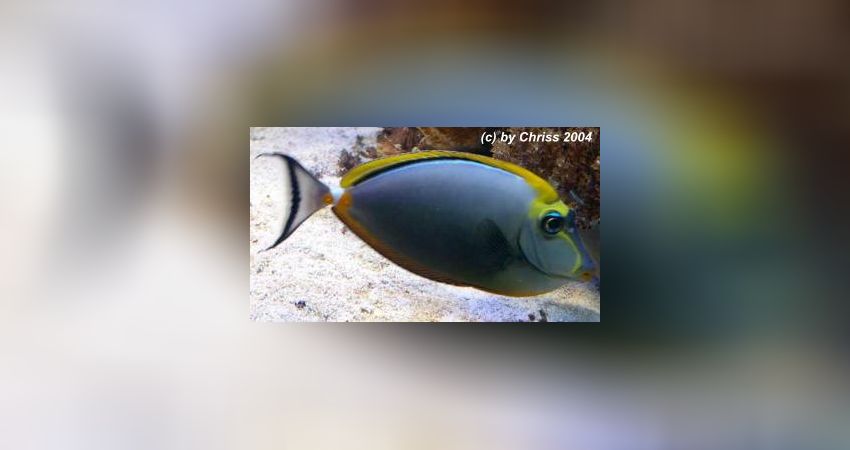
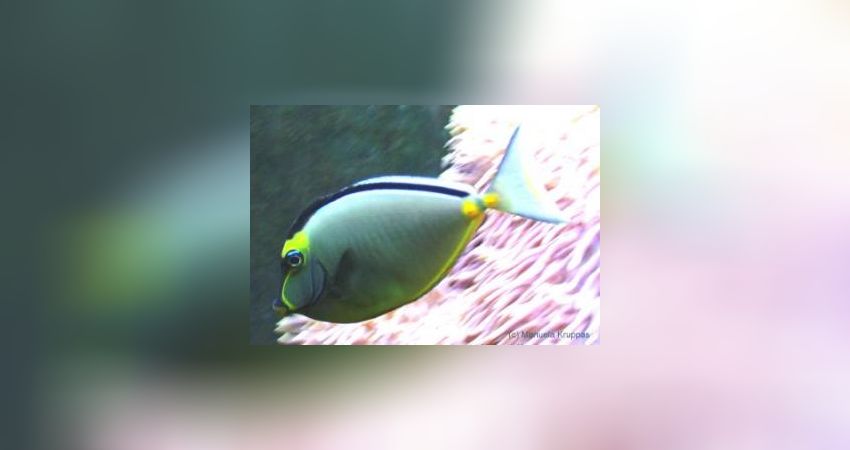
Naso elegans: This has its distribution in the Indian and Red Seas as far as Bali and Indonesia. However, both species occur together in Bali, although Naso lituratus seems to be clearly dominant. Naso lituratus has a broad black band along the base of the flukes and orange anal and ventral fins, while Naso elegans has a yellow-orange flukes and black anal and ventral fins. Both reach 45 cm in size, even in the aquarium if they have enough space !
Naso lituratus: With up to 45 cm in fish size in nature (without tail filaments) a true magnificent animal. To come straight to the point, such a fish has no place in a small 300-litre aquarium. Unfortunately, the two Nasos in particular tend to adapt a little to the conditions, but this should not cause you to keep them in aquariums that are too small. Often you can see the shifted balance between head and body, which are not in proportion to each other, when they are kept in a wrong position. Therefore we ask you to keep them only in sufficiently large aquariums. We consider even a 1000 litre aquarium only as a temporary solution. The distribution of Naso lituratus is in the West and Central Pacific!
Furthermore, Naso lituratus and Naso elegans repeatedly have problems with food intake, many become thin, no longer accept food and die prematurely. Whether this is really due to the lack of brown algae, which is often propagated in the literature, we are still unable to judge. In any case, not just a few aquarists keep it successfully and that without brown algae. Possibly it is also due to the treatment after the catch and before the import to us in the so called intermediate rearing.
The nutritional requirements of Naso lituratus and N. elegans should consist of 70% vegetable and 30% meat, especially frozen food should not be missing as a daily supplement! Many rhinoceros fish like to eat nori seaweed, banana, lambs tooth and, yes, you read correctly, are really fond of oat flakes. Naso lituratus and Naso elegans are particularly peaceful fish that never show aggression towards others. They quickly become trusting and will soon eat out of your hand. Especially with these surgeonfishes, smelts and shrimps have proven to be good additional food.
In Part 3 you can read interesting facts about the genus Acanthurus, which is also the largest family of surgeonfishes.
Manuela Kruppas and Robert Baur-Kruppas in October 2004
How do you like this article?
Info
Author

Bookmark
Comments
Topics
Similar articles
- Doktorfische und deren Vergesellschaftung
- 10 - Water, substrate and tank equipment
- Steinfisch muss umziehen
- 21 - First stocking marine aquarium: Part 1
- How a marine aquarium is created Part 52: The end of the Aqua Medic Armatus 400
- How a marine aquarium is created Part 47: The Armatus 400 after 30 months
- Blue anemonefish - a dream come true?
- 06 - The piping
- Reefsafe or not? The glass lizard eater Parachaetodon ocellatus
- The breeding of Pterapogon kauderni
Comments To the top
Please register
In order to be able to write something yourself, you must register in advance.






